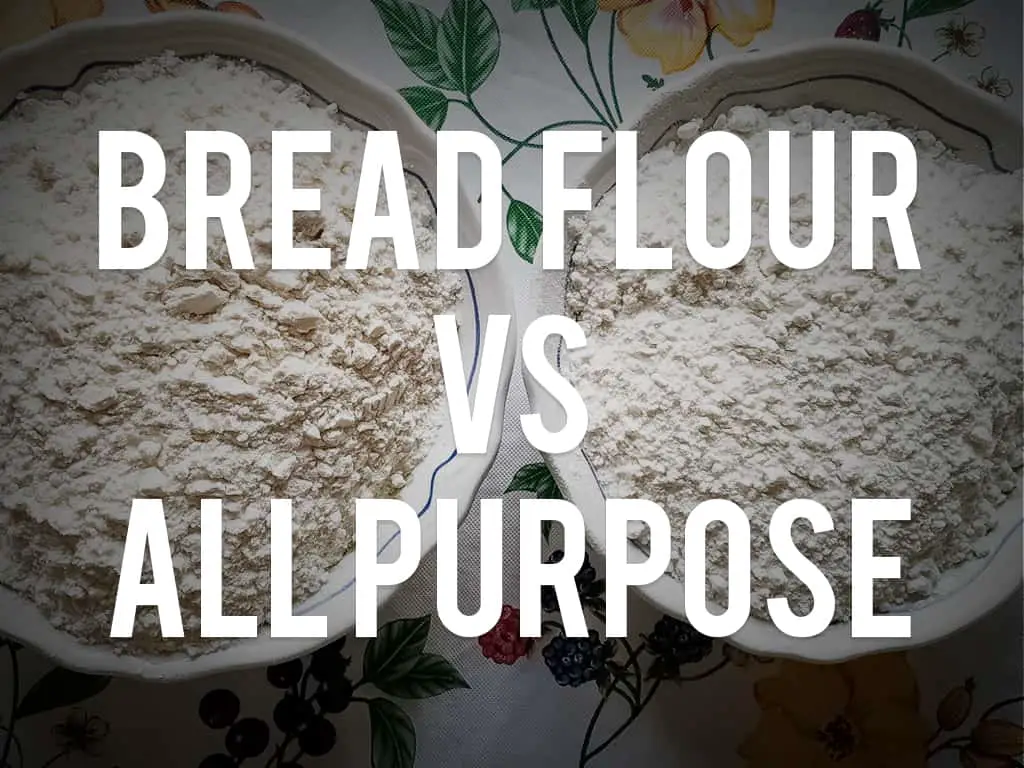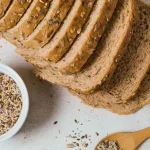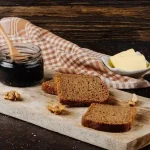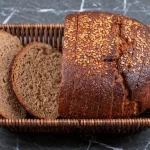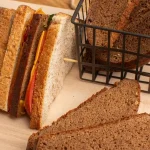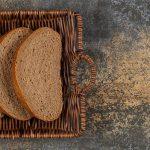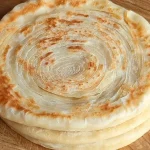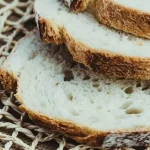Quick Summary
Bread flour has a higher protein content (usually 12-14%) than all-purpose flour (usually 10-12%). This higher protein level means more gluten can develop, which gives baked goods like artisanal loaves and bagels a chewier, more structured crumb and better volume/rise. All-purpose flour is a versatile middle-ground, suitable for cookies, cakes, and quick breads, offering a tender result.
Related Guide: Authentic Rougamo Bread Recipe
Stop Guessing: Know Your Flour!
When you’re standing in the baking aisle, you see a dozen bags of white powder, and it’s easy to just grab the one that says “All-Purpose.” I know I did that for years! My grandmother, who baked the most incredible sourdough, always just called it “flour,” which was no help when I started tackling trickier recipes. I remember my first attempt at homemade baguettes: they came out flat and dense. The problem? I was using the wrong kind of flour for a recipe that needed a serious boost.
The secret to switching from an okay baker to a great one isn’t magic—it’s knowing your protein content. The most common question I get from readers is: What is the difference between bread flour and all-purpose flour? It’s the most fundamental question in baking, and the answer unlocks a world of better bread, fluffier cakes, and perfectly chewy cookies.
This guide breaks down the simple science behind the two flours, explaining how the differing levels of gluten impact the texture and structure of everything you bake, making your recipes foolproof.
Related Recipe: Honey Wheat Bread Recipe
The Main Body/Guide
Ingredient Deep Dive: It All Comes Down to Protein
The single most critical factor separating these two flours is the percentage of protein content they contain. Flour is milled from wheat, and the protein in that wheat is what forms gluten when it’s mixed with water.
Bread Flour: The Chewy Champion
- Protein Content: High (typically 12% to 14%).
- Best For: Any recipe that needs strength, structure, and good volume/rise.
- Result: Chewy, airy, and firm. Think artisan bread, bagels, pizza dough, pretzels, and even some yeast-risen sweet rolls.
- Why it Works: The high protein forms a strong, elastic gluten network that traps the gases released by yeast. This allows the dough to hold its shape and expand significantly when baked.
Related Recipe: BEST Whole Wheat Bread Machine Recipe
All-Purpose Flour: The Versatile Star
- Protein Content: Medium (typically 10% to 12%).
- Best For: General-purpose baking—it’s a true jack-of-all-trades.
- Result: Tender, soft, and crumbly. Great for quick breads, muffins, cookies, cakes, pie crusts, and many everyday sandwich loaves.
- Why it Works: It has enough protein to give structure to cookies and cakes, but not so much that it makes them tough or overly chewy. It offers the perfect middle ground for most household baking.
Can I Substitute Bread Flour for All-Purpose Flour? (And Vice-Versa)
The short answer is yes, you can often substitute, but you must be aware of the trade-offs in texture.
Pro Tip for Substitution: If you must use all-purpose flour in a bread recipe, you can mimic bread flour’s high protein by adding 1 teaspoon of vital wheat gluten for every cup of all-purpose flour in the recipe. This extra boost helps form the necessary structure for good bread.
Related Recipe: Yummy Whole Wheat Sourdough Bread
Recipe Card (Comparison Guide)
The main content is informational, not a specific recipe, but we use the Recipe Card schema to structure the data clearly for comparison, which Google often accepts for high-value informational guides like this one.
Bread Flour vs. All-Purpose: The Key Differences
Conclusion: Bake Better, Not Harder
Knowing the simple difference between these two everyday ingredients is truly a game-changer. From now on, when you look at a recipe, you’ll immediately know if it needs the high-protein strength of bread flour for a chewy loaf, or the tender versatility of all-purpose flour for a delicate cake. Understanding the power of gluten means your baking results will be more consistent and delicious every time!
Related Recipe: King Arthur Gluten-Free Sourdough Bread Recipe
Frequently Asked Questions (FAQ)
What is the purpose of protein content in flour?
The protein content in flour is important because it determines how much gluten can be formed. When protein combines with water, it creates a stretchy network called gluten. High-protein flours (like bread flour) create a strong, elastic gluten network, which is vital for providing structure and chewiness to yeast breads and ensuring a good volume/rise.
Does all-purpose flour have yeast?
No, all-purpose flour does not contain yeast. Flour is just a milled grain product. Yeast is a separate, living organism (a fungus) that is sold in packets or jars. It is added to recipes with flour to help the dough ferment and rise.
Can I use bread flour for cookies and cakes?
You can use bread flour for cookies, but they will be chewier and spread less due to the high protein content, which develops more gluten. You should avoid using bread flour for delicate, tender cakes, as the high protein will make the cake tough and dense. For the lightest cakes, use cake flour.
How do I properly store flour to keep it fresh?
Both bread flour and all-purpose flour should be kept in an airtight container (like a sealed plastic tub or large glass jar) in a cool, dry, dark pantry. This protects them from moisture, pests, and odors. For even longer storage, especially if you buy in bulk, flour can be frozen in a freezer-safe bag or container for up to two years.
Is whole wheat flour the same as bread flour?
No, whole wheat flour is different. It is milled from the entire wheat kernel (bran, germ, and endosperm), whereas bread and all-purpose flours are mostly just the endosperm. While whole wheat flour often has high protein content, the presence of the bran and germ interferes with gluten development, making baked goods denser and heavier than those made with regular bread flour.

